|
On the night of November 29, 1929 the British freighter SS Norwich City ran hard aground on the reef at Gardner Island (now Nikumaroro). The accident and its aftermath took the lives of eleven crewmen and left twenty-four survivors stranded on the island until rescue ships arrived four days later. Epic as it is, our focus here is not the human story but rather the lessons inherent in the physical breakdown of the vessel. The ship’s deterioration over the years provides a model for what happens to a man-made structure exposed to the elements on that reef.
There is strong evidence that Amelia Earhart’s Lockheed Electra aircraft was landed on that same reef eight years later about a quarter mile (400 meters) north of the shipwreck, and was subsequently washed into the ocean by rising tides and surf. Just as, over the years, debris from the ship was driven shoreward and into the lagoon, so pieces of wreckage from the aircraft were reportedly later seen on the reef surface, on the beach, and on the shore of the island’s lagoon.
Here, in historical photos, TIGHAR expedition photos, and satellite imagery is the demise of a once-proud vessel.
1928
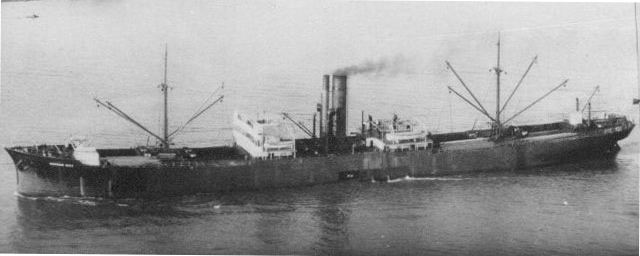
This photo was taken the year before the wreck. According to Lloyd’s Registry the ship was 397 feet long. She was powered by a triple-expansion steam engine amidships burning fuel oil. The hull and decks were steel. The superstructure – the white painted structures in the photo – were wood. Photo courtesy National Museums and Galleries of Wales.
1929
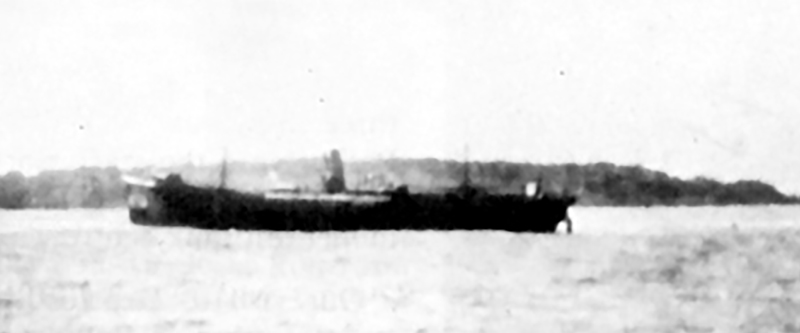
Although of poor quality, this is the first known photo of Norwich City aground at Gardner. It is believed to have been taken from one of the ships that arrived from Samoa on December 3, 1929 to rescue the survivors. Notice that the superstructure is gone. The impact of the grounding resulted in a fire that consumed the wooden parts of the ship.
1935
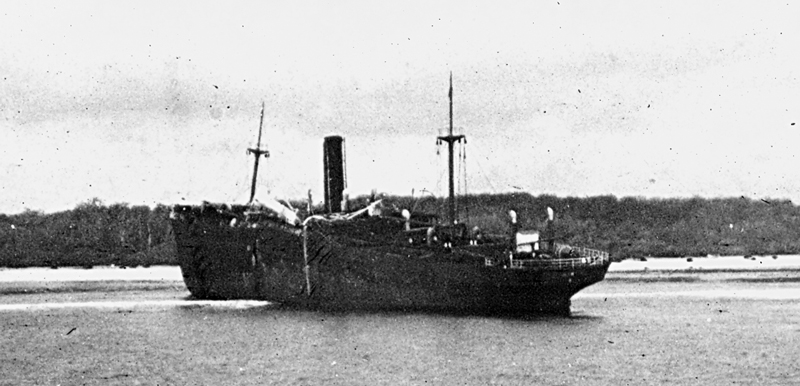
Six years on the reef. Taken from the Royal Navy cruiser HMS Wellington when it mapped the island’s perimeter in 1935, this photo shows that roughly half of Norwich City’s hull rode up onto the reef in the grounding. The stern, from the white line of surf aft, is hanging off the reef edge and has begun to settle from the stress.
1937
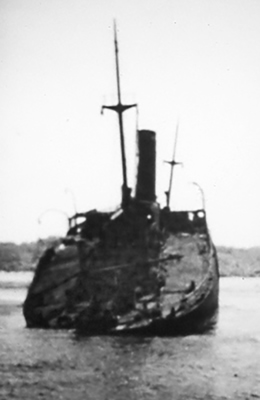 |
Eight years on the reef. At the time of the Earhart disappearance, Norwich City was a rusted-out hulk but still essentially intact. This photo from the October 1937 British expedition to the island shows that the ship’s back is broken and the stern has settled further. |
1938
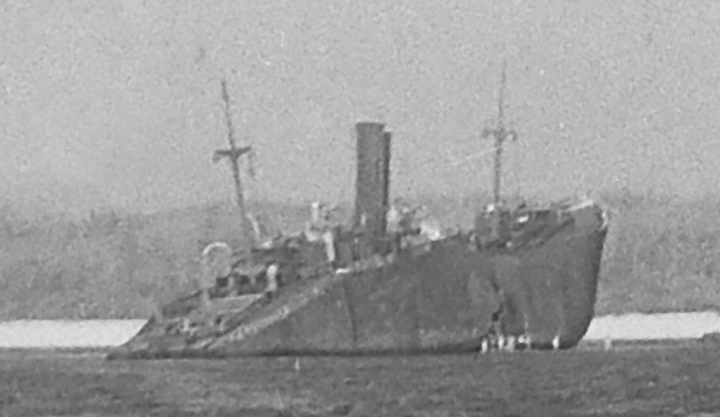
Nine years on the reef. When the New Zealand Pacific Aviation Survey expedition arrived on December 1, 1938, the stern was partially submerged and a large crack had opened in the hull amidships. The tiny white figures beside the crack are men. The first ten-man work party of Gilbertese settlers arrived three weeks later.
1939
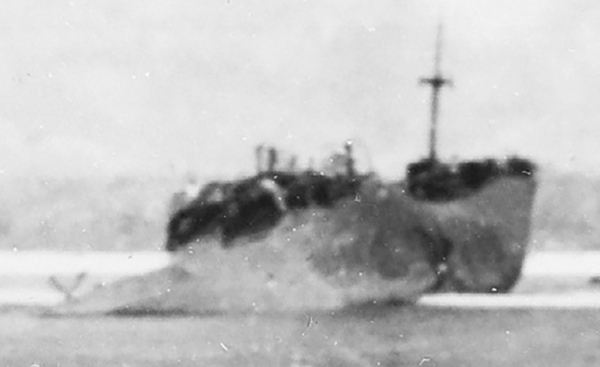
By the time the New Zealand survey party left two months later, the funnel had collapsed and the stern of the ship had broken off in a January storm and tumbled down the reef slope, leaving a large section of hull plating on the reef edge.
1941

Twelve years on the reef. This aerial photo, taken from a U.S. Navy PBY in June 1941, shows that large pieces of wreckage have been driven in a southeasterly direction across the reef and many smaller bits of debris have been pushed up onto the beach.
1942
The condition of the wreck had not changed significantly by the following January. The colonial village across the main lagoon passage was in dire straits, cut off from resupply by the war. This photo was taken from a USAAF C-47 making a humanitarian airdrop of food to the British colony.
1953
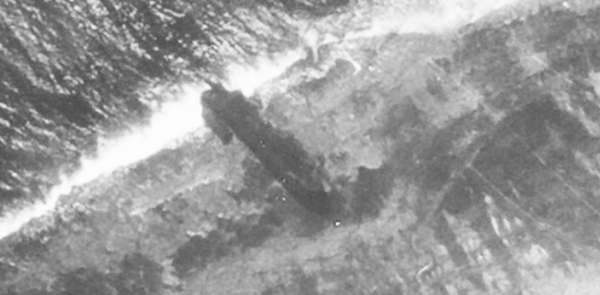
Twenty-four years on the reef. There are no known images of the wreck after 1942 until an aerial mapping survey of the island in 1953. In this photo the hull from amidships forward appears to be intact.
1978
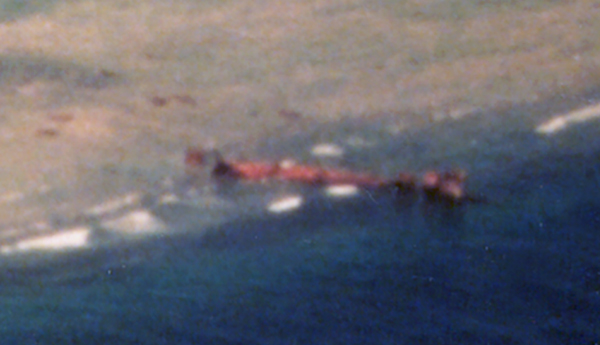
Forty-nine years on the reef. Another long gap between images. By the time this photo was taken by a company surveying the island for possible mineral resources, the hull plates had broken down and been carried away. Where they went is not clear.
1985
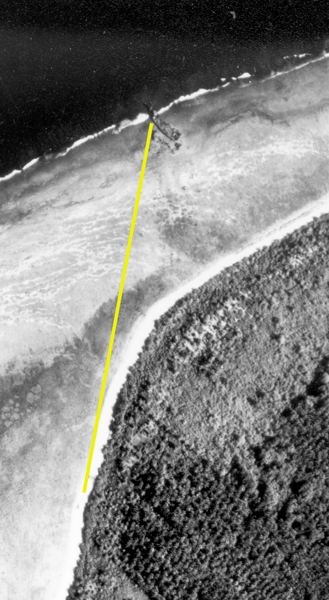 |
Fifty-six years on the reef. In this aerial mapping photo a large section of hull plating can be seen on the beach 600 meters (roughly 2,000 feet) southeast of the wreck. It’s still there today, but no other large sections of hull are in evidence. |
1988
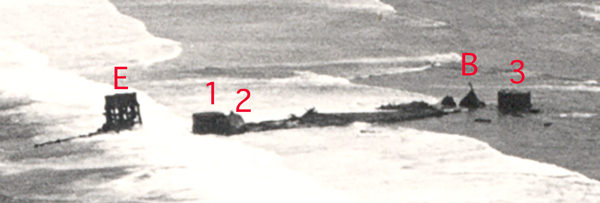
Fifty-nine years on the reef. This aerial photo was taken by the Royal New Zealand Air Force. With the hull plating gone, several prominent internal features of the ship have been exposed. The triple-expansion steam engine (E), a large storage tank (1), the boiler (2), the remains of the bow (B), and another large tank (3).
1989
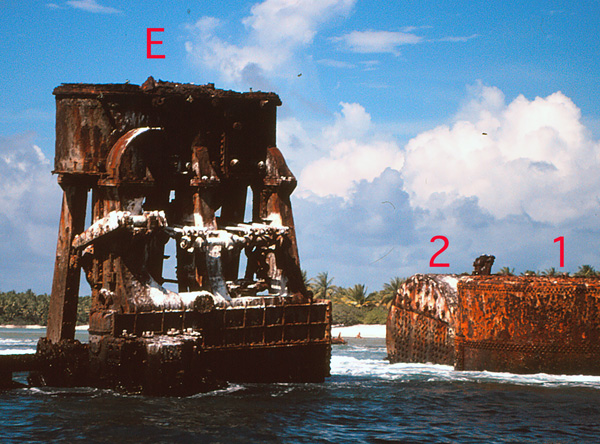
Sixty years on the reef. When TIGHAR visited the island for the first time the wreck was relatively unchanged from 1988. The white surfaces are bird droppings. Engine (E), boiler (2), and tank (1).
1991
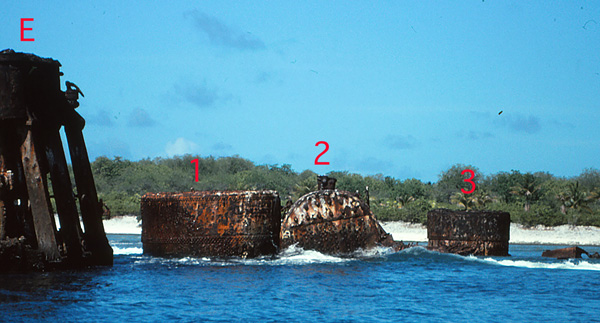
Sixty-three years on the reef. When TIGHAR returned to the island three years later the boiler (2) had shifted position.
2001
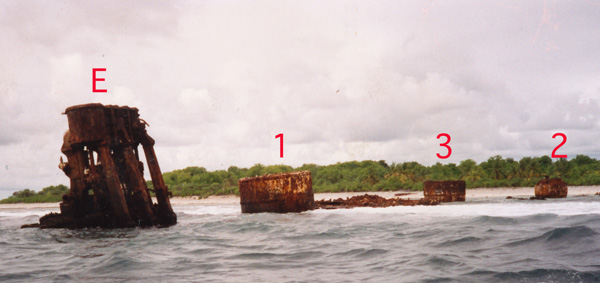
Seventy-three years on the reef. Ten years later, the engine, and tanks 1 and 3 had not moved but the boiler (2) had been driven shoreward and the remains of the bow had collapsed.
2007
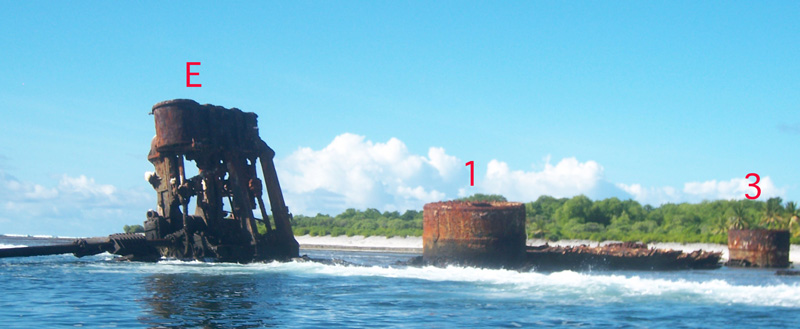
Seventy-eight years on the reef. The engine has lost the seaward-most of three supporting structures and has begun to tilt.
2010
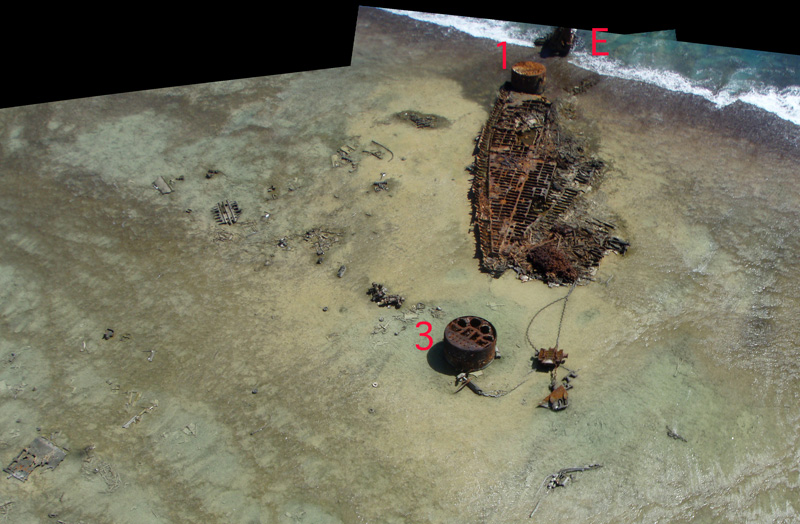
Eighty-one years on the reef. The engine and tanks 1 and 3 have not moved, but the boiler is gone. This photo was taken with a camera mounted on a kite.
2015
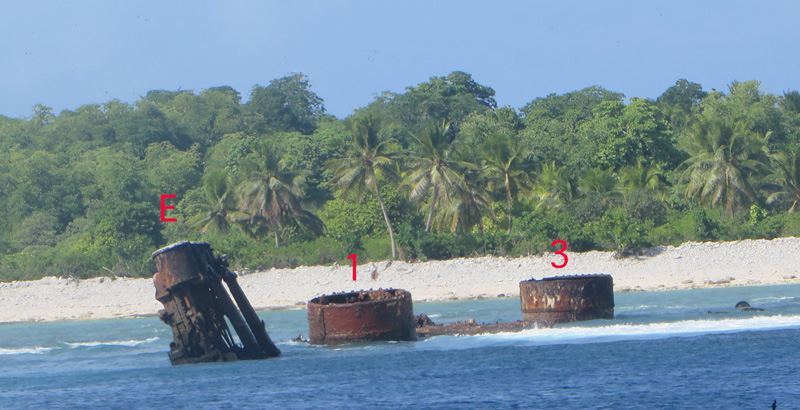
Eighty-six years on the reef. Five years later, the engine tilt has increased but the position of the two tanks has not changed.
2016
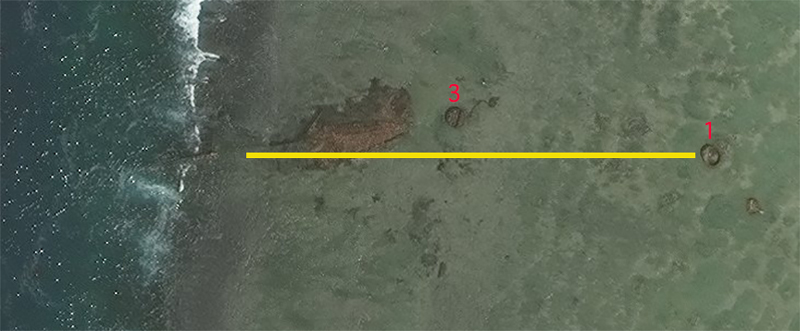
Eighty-seven years on the reef. A Digital Globe satellite image taken on November 15, 2016 shows that the engine is gone and tank one has been driven shoreward. Tank three is in the same position it has maintained since it was first visible in 1988.
The sea will continue to take it toll until nothing remains, but the engine that has stood like a welcoming old friend throughout TIGHAR’s many expeditions to Nikumaroro will greet us no more, and the plaque we installed on the engine in 2001 has now joined the brave men it commemorates.

|
